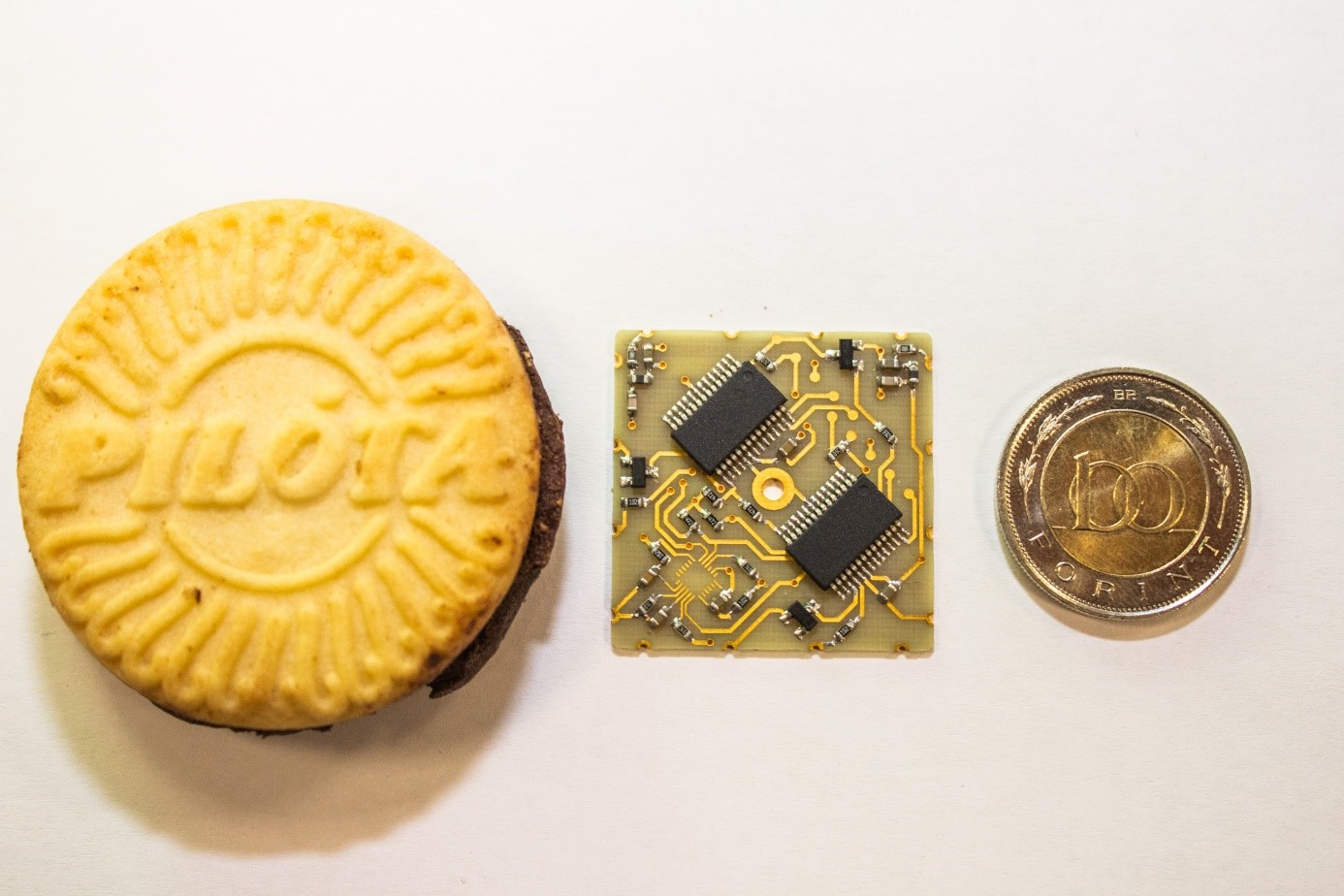SZE prepares for space: students develop communication module for satellites
When the SZE-SAT team of Széchenyi István University was founded, it set itself the goal of putting a satellite of its own design into the sky. The students have reached an important stage in this process, as they have completed and tested the module that will soon be able to broadcast the name of the institution and Győr to the countries of the world, announcing that Széchenyi István University has entered space. In December, the satellite of the Budapest University of Technology and Economics (BME) will carry the Győr-developed communication panel into the cosmos.
Several universities are involved in the assembly of the MRC 100 satellite, which is being developed by Budapest University of Technology and Economics (BME).
The SZE-SAT section of the Jedlik Ányos Vocational Hall of Residence of Mechanical and Electrical Engineering at Széchenyi István University undertook the task of creating a 30 by 30 by 3 millimetre panel to transmit short text messages to Earth in order to improve data communication within the satellite.
Interestingly, the device, which has a weight of just 2.1 grams, was literally weighed on a pharmacy scale, as it had to be measured to the nearest thousandth of a gram.
 Gábor Marton, Martin Magda and Dániel Keresztény with the communication mini-module being prepared for space (Photo: Márton Horváth)
Gábor Marton, Martin Magda and Dániel Keresztény with the communication mini-module being prepared for space (Photo: Márton Horváth)
"We heard about the opportunity at the end of last year, and by the beginning of this year we knew for definite what parameters we had to meet. Then we started working on the project at full speed, and by February we had already completed our zero panel," reminisced Gábor Marton, who graduated from the University with a degree in Automatization in 2007 and thus coordinates the students' work as a Széchenyi alumnus. He added that they had to overcome several difficulties, such as the lack of chips or rethinking their concept, but in the end they managed to solve the task with real teamwork.
"The primary goal with the module is to be able to receive the pre-programmed messages on Earth after the launch. If this is successful, anyone can decode the names of our city and university, the SZE-SAT lab and the creators. The absolute success would be if we could receive these signals while the satellite is fully operational," stressed Martin Magda, who put together the module's programme. Dániel Christian, who is responsible for developing the hardware, added that the antenna would be located on the roof of the central building of Széchenyi University to receive the messages and monitor the satellite's operation. "The equipment will soon receive a new rotary motor, so the next task is to programme the control system and develop the reception technology. We need to have this ready for the launch planned for the end of the year," he said.
 Developed by students at Széchenyi University, the panel is slightly larger than a 100-forint coin, but smaller than a Pilóta biscuit. The SZE-SAT team flew the biscuit on board a weather balloon to an altitude of 32 kilometres, which means that the probe flew with a real Pilot. (Photo: Márton Horváth)
Developed by students at Széchenyi University, the panel is slightly larger than a 100-forint coin, but smaller than a Pilóta biscuit. The SZE-SAT team flew the biscuit on board a weather balloon to an altitude of 32 kilometres, which means that the probe flew with a real Pilot. (Photo: Márton Horváth)
By the beginning of the summer, the team had produced several modules and then subjected the development to a wide range of tests. During thermal shock testing, the panel was briefly exposed to two temperature extremes, minus 40 and plus 60 degrees Celsius, and then continuous temperature changes were generated in the climate chamber, but also vibration shock testing was carried out to simulate the conditions expected at launch and in space. The device was also subjected to X-ray and CT scans to ensure the quality of the soldering. "Finally, we also carried out a long-duration test, during which we operated the module for a week, to prepare it for its orbital mission," explained Gábor Marton.
The members of the team stressed that they had gained a lot of experience during the panel's construction, and thus came closer to their goal of building their own satellite for Széchenyi University. "Building and launching satellites is a complex task, which is why we have students of electrical engineering, law and economics among us," said Dániel Keresztény. Martin Magda added that anyone interested in this field is welcome to join the team, as the students can learn a lot from each other. "Some are more experienced in manufacturing technology, others in measurement or law, so we complement each other and inspire each other." Gábor Marton added that SZE-SAT wants to reach out to young people interested in space science in secondary and higher education, and the Vocational Hall of Residence supports students' scientific research and their participation in conferences of the Scientific Students Association. Local companies will also be involved in the construction of the university satellite, working together with partners to take Győr's reputation to the stars.
 The developers with the panel on the roof of the Széchenyi István University, in the background the antenna with which they are preparing to receive the signals of the module to be placed on the satellite. (Photo: Márton Horváth)
The developers with the panel on the roof of the Széchenyi István University, in the background the antenna with which they are preparing to receive the signals of the module to be placed on the satellite. (Photo: Márton Horváth)
"We are very proud of our students and their assistants who took part in this work. After Neil Armstrong’s famous quotation, this is a small step for man, but a big step for Széchenyi István University. It is true that the 30 millimetre printed circuit board created by our students is not very big, but it is a development that will circulate the reputation of our University in outer space," said Dr Péter Vári, Associate Professor at Széchenyi University and Deputy Director General of the National Media and Infocommunications Authority. He added that all the necessary knowledge is available in the various faculties of the university, so if young people have the stamina, they can launch their own small satellite into space in the coming years.
"Few higher education institutions can claim that their students are able to develop space tools, but at Széchenyi István University even this is possible." he added.











